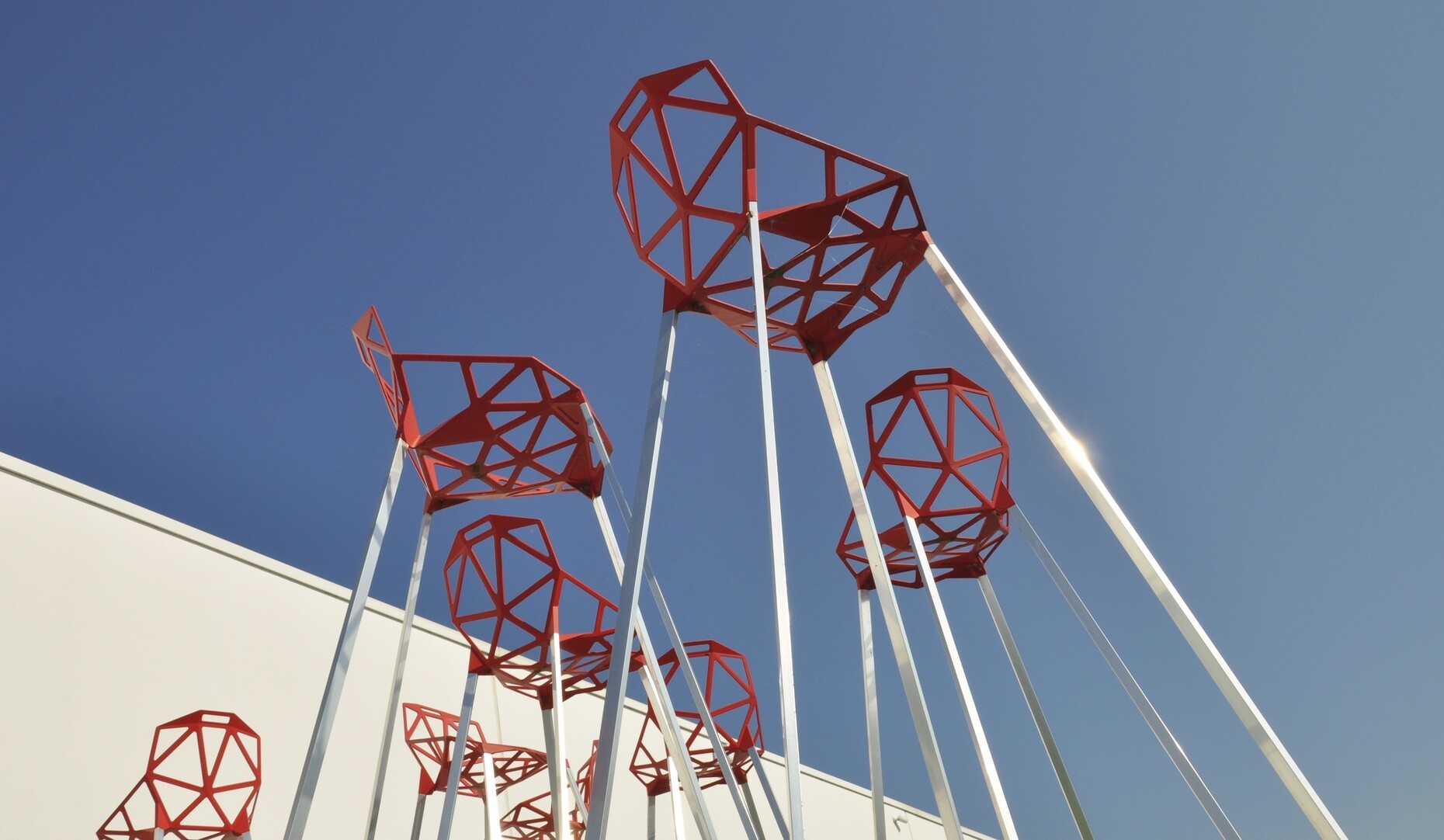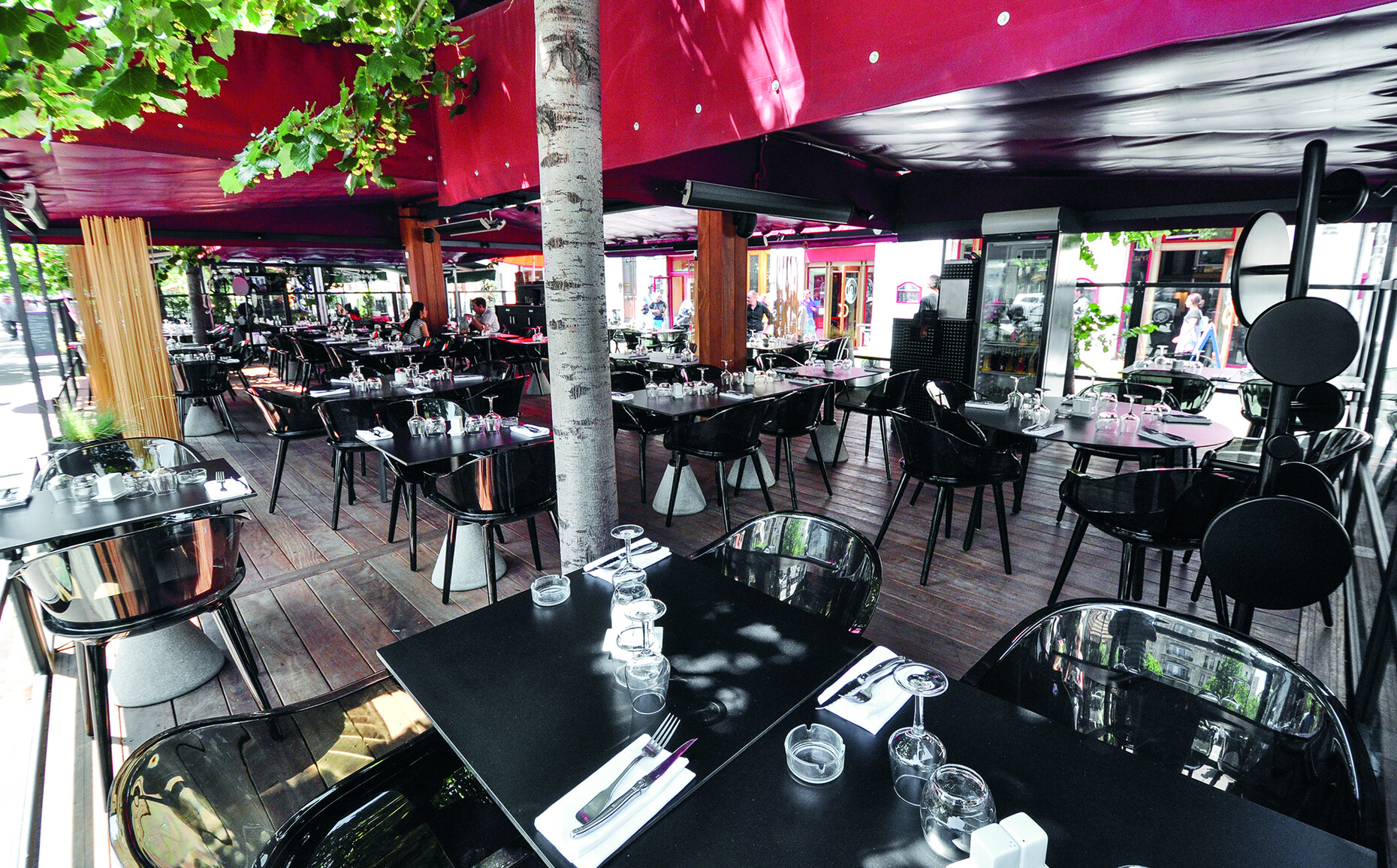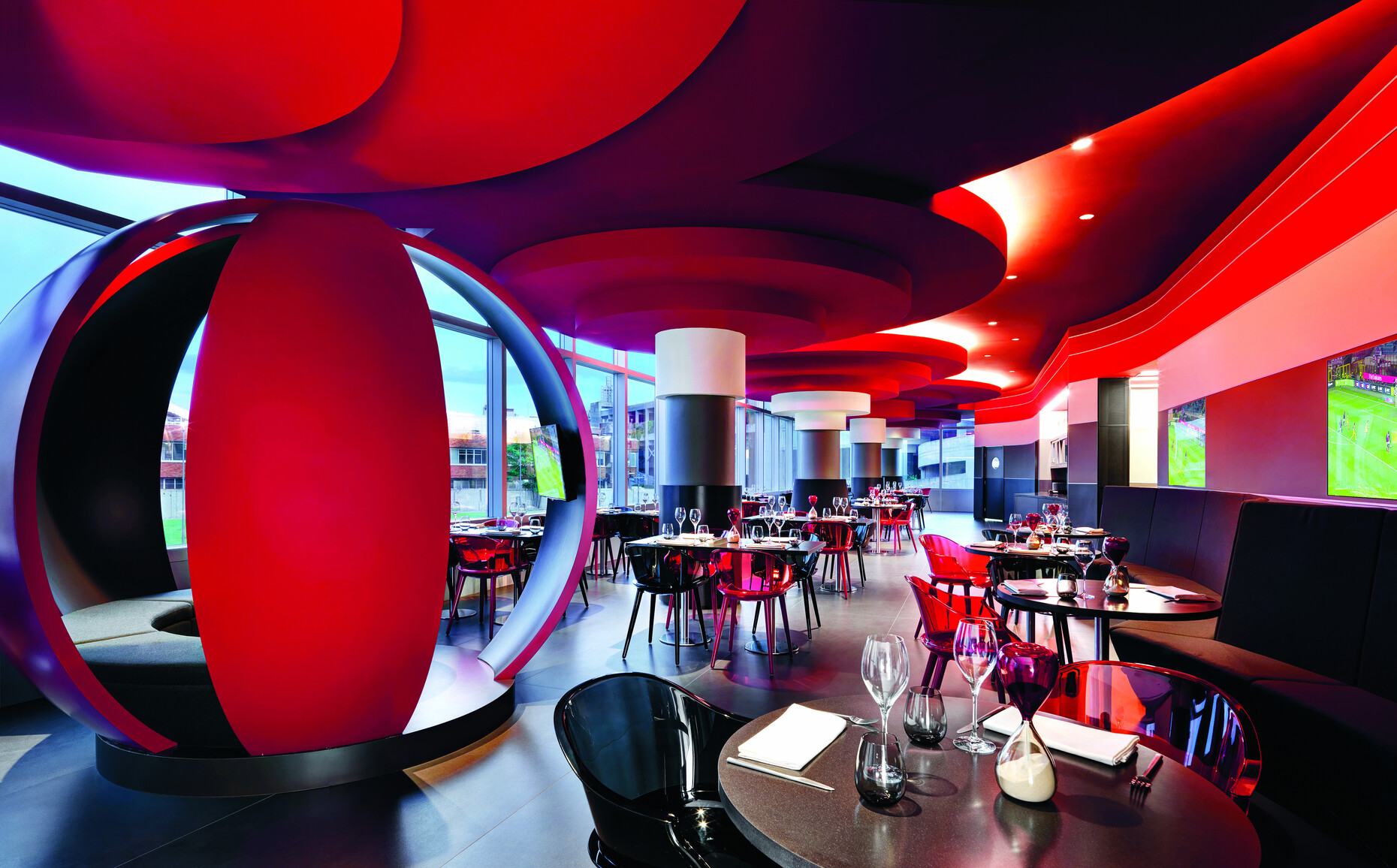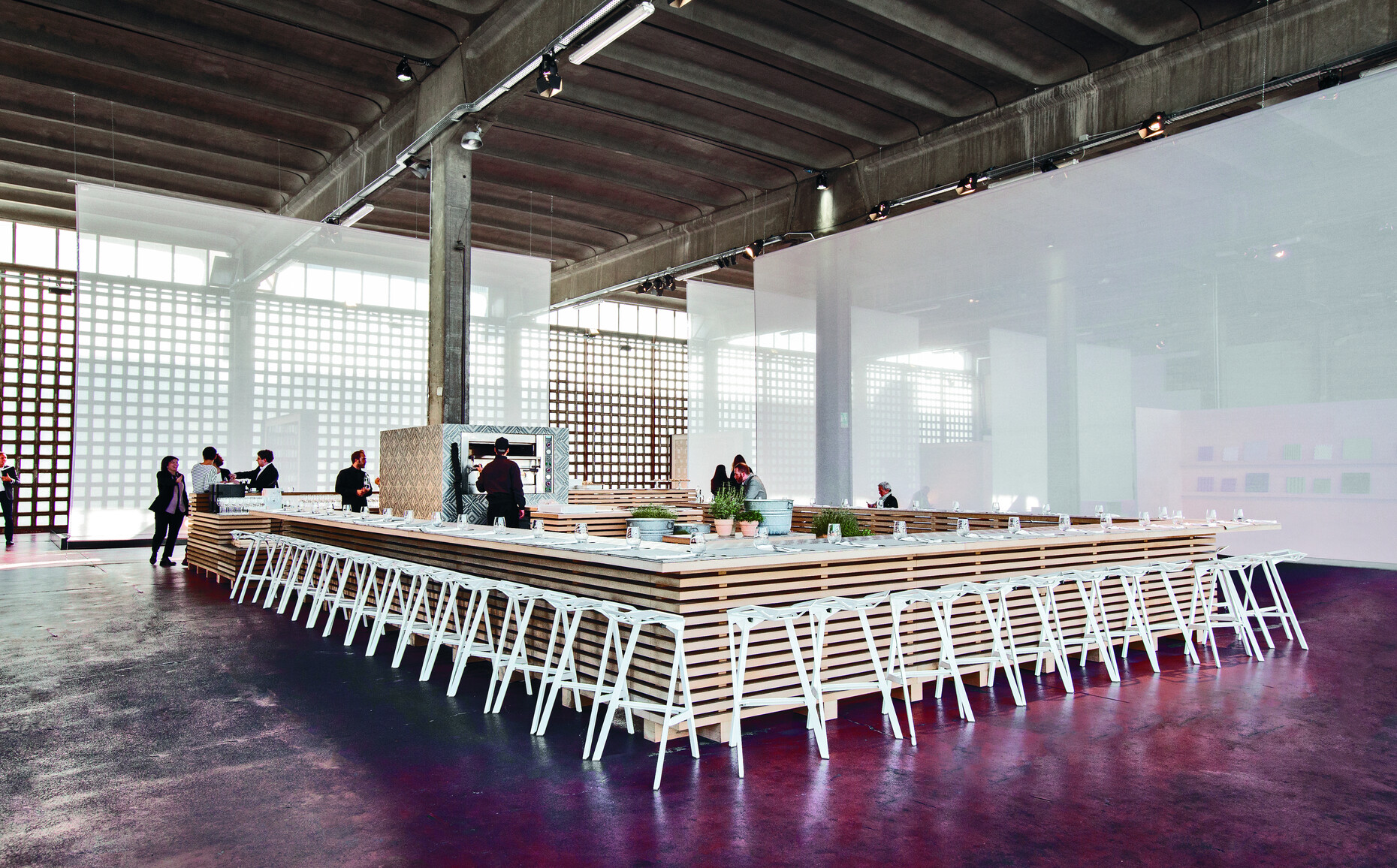STYLEPARK MAGIS – FOCUS ON HOSPITALITY
Welcome to our table!
I.
Sentences such as “Green is the new white” sound ridiculous at best. They soak up the hype surrounding the very latest like a sponge, which briefly moistens the professionally heated minds of commercialism with the cool promise of following the trend. You might imagine we are dealing with a similar phenomenon in “Eating is the new conference”. However, there is more behind this shift from the biznoid to the social gathering. Since the call for team spirit and creativity has even extended to the office, informal forms of personal exchange and fostering a sense of togetherness have been particularly popular. Whether cultivated for their own sake or intended to counter the growing pressure for efficiency in particular, is another matter entirely. But the fact remains that eating is arguably the most archaic of all shared experiences.
Whether at home in the bosom of the family, in offices, advertising agencies, or designer studios you find open today kitchens everywhere today. Where once pizza was eaten straight from the box, today colleagues prepare meals for each other and sit around a table with their boss. It is becoming increasingly mainstream to develop an everyday sense for the culinary. There are hardly pleasanter and easier ways of discussing things or settling differences than over shared meals or cooking together. Moreover, it brings together people from different departments who would otherwise not talk to each other. So for the space of a 30 or 60-minute lunch break a group is formed around the table as a social location – in the spirit of hospitality and far removed from day-to-day business.
II.
It is often forgotten that furniture is not only made for showrooms but also for people and their lives. To do justice to this fact we generally talk in a vague way about users, without paying closer attention to their needs or the kind of furniture they really want. Take for example a table and chairs. Contemporary design offers numerous tables and chairs in various materials and shapes, and for a wide variety of purposes. Today, many are designed with the best of intentions by reputable designers and produced reliably and properly by manufacturers themselves no less well-known. However, as they have not been integrated into a lifestyle or proven their worth in a variety of ways, they remain strangely abstract and devoid of life: mere products. They have not yet unfolded their true meaning and purpose, have not become needed objects in the best sense of the word, designed more for us rather than simply being attractively designed objects.
III.
Alongside friendly words of welcome by a host, furniture alone cannot contribute very much to a culture of hospitality. That also goes for tables and chairs. You need only think of those talks between politicians at which the representatives of various countries have gathered around a single table – often in a historic setting – in order to discuss current issues or serious problems. And the atmosphere to put it politely is somewhat cold, and could at best be called formal. Hierarchic relationships can also be celebrated and cemented using a table and chairs. Everyone is familiar with that from public offices, old-fashioned director’s offices, or in parody in the Charlie Chaplin film “The Great Dictator”.
But a large table with several chairs around it is an ensemble that can also appear inviting. The appearance of community and democracy can also foster conversation. And it is easy to experience in a Cologne brewery or an Italian trattoria – to name just two of many options – how much this combination can enable, foster and stimulate exchange between people that were previously strangers. When people sit together around a table, talk, drink and laugh together, the social conventions of civil society are relaxed somewhat. Perhaps that is also one of the reasons why cooking and eating together is more en vogue now than it has been for a long time.
After all, tables and chairs, but not only these items, are capable of creating a sense of company in a very simple and natural manner. Be it eating breakfast at home with the kids, in the restaurant round the corner, or enjoying a festive meal with guests in your own dining room: whenever people sit around a table a sense of togetherness is generated. Despite all the differences between the participants what is created around a table is a space characterised by a feeling of community. When people come together and sit down together a party evolves, no matter how rudimentary it might be or how quickly it might break up again. A table with chairs grouped around it embodies the desire and will to put aside all divisions, at least for a moment, and devote attention to one another. The table assumes the basic form of a society in which everyone sees and hears everyone else from their own position, in which people can speak openly with one another, celebrate or argue. It is almost as if at the moment when we are all sitting together – ideally over food and drink – we no longer feel we are strangers. And though opinions may still differ on the one or other topic, one person might favour this, another reject that you no longer feel you are strangers.
IV.
Possibly some people haven’t yet realized: Magis is not just any old manufacturer with a gift for contemporary design, Magis is a very special firm. One with a DNA that can be seen as exemplary in the way it fuses local and global elements. On the one hand, you find attitudes and characteristics that stem from centuries-old Veneto traditions. These include first of all an open relationship vis-a-vis everything new, strange and far removed. Magis has never lost its curiosity about what tomorrow will bring, on the contrary. It has intensified this feeling and shaped it into its very own experimental culture. Obstinately and with strong will and daring, occasionally seasoned with a touch of craziness designers work at developing products, which neither deny their origins nor the desire to put down roots in the present and have an impact on the future. And not least of all Magis is a family firm in which the desire to produce excellent, convincing design prevails over everything else.
All of this is expressed not only in extraordinary products. The material and cultural mix taken as the development melting pot at Magis fosters a highly individual culture of collaboration and hospitality. Anyone looking at Magis’ current program will quickly notice that it not only contains a surprisingly large number of chairs and tables by widely respected and globally operating designers like the brothers Ronan and Erwan Bouroullec, Konstantin Grcic, Jasper Morrison or Philippe Starck, but that all this furniture, which was always conceived, developed and designed in close collaboration with Eugenio and Alberto Perazza, avails itself of materials and processing methods that equally reflect state-of-the-art technology and are anchored in old crafts and industrial methods. When it comes to creating a new product nothing is left to chance. Typically, there are local firms which are indispensable as only they have the necessary know-how. Be honest now: who apart from Magis could have come up with something like Chair One which boasts such extraordinary form and material? Which manufacturer would have dared to create “Officina” – a series of tables and chairs with wrought iron frames? And who would have even considered cast-iron table frames and benches like the “Brut” series by Konstantin Grcic presented 2016 at the Salone del Mobile in Milan?
V.
In a nutshell, in terms of development and production Magis applies a pronounced and deeply-rooted form of togetherness, without ever being content with merely preserving the traditional. This is not only the case when it comes to conceiving something new in an intensive exchange with designers involving numerous conversations and phone calls, and transforming something into reality step-by-step. Ultimately, the open manner and eagerness to experiment that is practised at Magis, also penetrates and characterises its products. You could also say: what is manifested in the products is a form of hospitality that is equally progressive and rooted in tradition, and which never appears abstract or even artificial. Hospitality also requires a bond to places and spaces, and Magis repeatedly succeeds in combining this with a forward-looking attitude and offering furniture infused with the spirit of Italian hospitality capable of delighting a young urban audience.
This special spirit is evident in the corporate culture of Magis and many of its products. The aim is always to bring people together, people who shape something together, sit together in a restaurant or at home around a table, or meet by chance in a hotel lobby. Practised hospitality of this nature remains a deeply human characteristic and a political act – not only in times of flight and expulsion, but also in design and around every table.


































